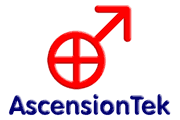Homes
The features of Silvergreen's homes include:
- Strong, steel frame
- Long-lasting; storm, earthquake, fire and termite resistant.
- Spacious, comfortable and stylish.
- Built using environmentally-friendly building materials.
- Thermally efficient, designed to use passive heating and cooling.
- Incorporating energy production technology such as solar panels.
- Water tanks and water recycling system.
- Energy-efficient hot water and cold water systems.
- Energy and water-efficient appliances and fixtures.
- A built-in wireless router and access point, providing internet all the time, anywhere in the house.
- Integrated with the natural environment through outdoor spaces.
- Permaculture and native plant gardens.
Footings
Our homes will be pole homes, with steel posts set in concrete footings. This is done for two reasons - to reduce usage of concrete as much as possible, and also to induce passive cooling via air flows beneath the floor.
Cement production is one of the world's largest sources of carbon emissions, so we endeavour to reduce usage of cement and concrete as much as possible. However, there are few suitable and cost-effective alternatives for footings.
Steel-frame
We may use the steel-frame construction system designed by Lysaght, including their Quika-Floor, Supraframe and Supratruss systems. These comply with all Australian Standards, have been appraised by the CSIRO, and have received Certificates of National Accreditation as a building system.
Using this system saves an enormous amount of time, as well as the expense of engineering certification.
Cladding
Exterior wall and roof cladding will probably be Colorbond steel from Lysaght. Aside from the environmental benefits of steel, there are a range of profiles and colours to choose from, and the effect is modern and attractive.
People are often concerned that using steel cladding will mean that the house will heat up excessively during summer. However, with an air gap between the external and internal cladding, very little heat is transferred to the inside of the house. This can be mitigated by using insulation between the external and internal cladding, and reduced even further (especially on the roof) by using a light colour.
For internal cladding and floors, we may use an environmentally-friendly product such as Enviro Board. This is an area of current research.
Energy Production
The homes will have solar panels fitted to the roof, which will produce about half of the energy requirements of the household (the remainder of the energy will come from wind turbines positioned elsewhere on the site).
The roofs will be angled at 17.5° and facing north, in order to maximise the amount of solar energy captured.
Energy Efficiency
The homes will be designed in accordance with new government energy efficiency guidelines. Incorporating passive heating and cooling design principles will reduce the costs of temperature control, which typically form a large fraction of a home's electricity expenses.
Insulation made from sustainable materials will also be used to reduce heating and cooling costs.
The homes will come with energy efficient lighting, and possible also devices to ensure that items such as televisions, DVD players and computer screens do not go to "standby" mode, but are completely turned off when not in use. Another system under consideration uses occupancy sensors that automatically turn lights off when there's no-one in a room.
Rainwater Harvesting
Since we are building new homes, we have the luxury of locating water tanks under the house. These will be larger-than-usual tanks (around 50,000L) to insure against the possibility that drought conditions may worsen during climate shift. Positioning water tanks under the house saves space, and also makes it easier to connect downpipes from all sides of the house to the tanks, thus utilising the entire roof area for rain harvesting.
Tanks will most likely be steel or polyethylene, environmentally-friendly alternatives to concrete. Poly tanks are long-lasting, and provide better value in terms of dollars per litre of water storage than other options. Steel has the advantage of being fire-proof.
Gutter mesh, such as steel, fire-proof Blue Mountain Mesh, will be utilised to ensure that leaves and debris do not clog the gutters, and rain heads will be fitted to downpipes to deflect leaves and other debris away from the flow of water. Water will be filtered on its way into and out of the tanks.
Our water tanks may be connected to the town water supply to ensure a minimum water level is maintained. We may also incorporate a device such as Rain Alert to monitor water levels.
Water Recycling
Each home will have a grey water recycler (e.g. a Perpetual Water - Home) built-in, which will recycle water to a level where it can be re-used in the washing machine or on the garden. Incoporating a system like this greatly reduces a household's water consumption. A second tank is used to store recycled grey water.
Dry Composting Toilet
To save a large amount of water (flushing toilets accounts for about one third of a regular household's water usage) while also producing a high quality fertiliser for your permaculture garden, each home will include a dry composting toilet such as a Rota-Loo.
Energy-Efficient Hot Water System
A heat pump hot water system such as the one by Quantum will be used, located under the house in the same space as the water tanks and dry toilet. These are even more energy efficient than solar hot water systems, and can produce hot water even if ambient temperatures drop as low as -15°C.
Cold Water System
This is a luxury item! As most Queenslanders know, tap water can become uncomfortably hot during summer months. Therefore we will offer an optional water cooler to be installed under the kitchen sink alongside the water filter.
Appliances
We will provide the option to include an energy-efficient refrigerator and/or a water-efficient washing machine with each home.



